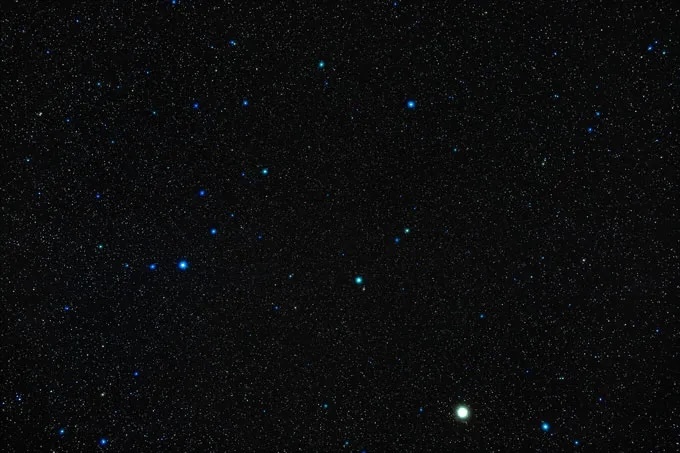3.07.2024
Some 3,000 light-years away, a white dwarf goes nova about once every 80 years
Keep your eyes on the night sky this summer, scanning for the constellation Corona Borealis, and if you are lucky, you may glimpse what appears to be a new star winking on in the dark.
The brightening point of light will not be a new star, but a nova eruption about 3,000 light-years from Earth. There, a white dwarf star orbiting a red giant tears material from its larger companion. When enough mass collects on the white dwarf’s surface, the rising pressure and temperature will trigger a blast that can be seen from Earth with the naked eye — but for only a few days to a week.
“This is a once-in-a-lifetime opportunity,” says Gerardo Juan Manuel Luna, an astronomer at the Universidad Nacional De Hurlingham in Argentina. “We are in the right time, in the right moment, with the right instruments.”
The white dwarf and red giant constitute a binary system known as T Corona Borealis, or T CrB. Astronomers believe that the nova will occur anytime between now and September. T CrB repeats its eruption about every 80 years. The last time this happened was in 1946 (SN: 2/23/46).
Novas take their name from astronomer Tycho Brahe’s 1573 report of a new object in the constellation Cassiopeia titled De Nova Stella, Latin for “On the New Star.” Astronomers today know that these nova stella are in fact blasts from white dwarfs, the dense leftover cores of stars that have shed their outer layers. When a white dwarf siphons material from a nearby companion star, the accreted mass can trigger a nova (SN: 2/12/21).
T CrB experienced a sudden brightening in recent years that astronomers call a “super active” phase followed by an apparent dip in activity, which signals the nova is probably imminent. The same pattern was observed before T CrB burst in 1946 and 1866.
Here’s where to look for the new star
The constellation Corona Borealis, which is Latin for “Northern Crown,” consists of seven stars in an arc resembling the letter C (toward the left in this image). Positioned between the bright stars Vega and Arcturus, it is visible high overhead during summer evenings in the Northern Hemisphere while appearing close to the northern horizon in much of the Southern Hemisphere. To find the Northern Crown, trace an arcing line from the handle of the Big Dipper to Arcturus (bright spot bottom right), and then look for the semicircle of stars nearby to the east. The nova will appear just outside this semicircle.

This time around, scientists plan to get a better view of the nearby nova than ever before. Dozens of telescopes around the world and orbiting in space, spanning the entire electromagnetic spectrum, will fix T CrB in their sights in an effort to unravel the mysteries of these cosmic blasts.
“We hope to be able to answer questions with this object that then might be relevant to all the other accreting and eruptive white dwarfs,” says Jennifer Sokoloski, an astrophysicist at Columbia University.
One of the main questions is whether the white dwarf in T CrB gains or loses mass following each successive nova. The eruption will eject material into space, but some of the mass ripped from the red giant may sink into the white dwarf, causing the small but dense star to gain mass over time. If this is the case, then repeating novas such as this one might ultimately lead to even bigger explosions called type 1a supernovas, which play an important role in the evolution of star systems and entire galaxies.
“That’s the holy grail,” Luna says. “After the eruption, say in the next five years when things are calmed down, we should be able to measure the mass again and see what happened.”
